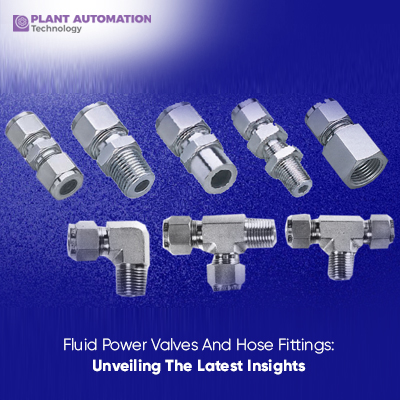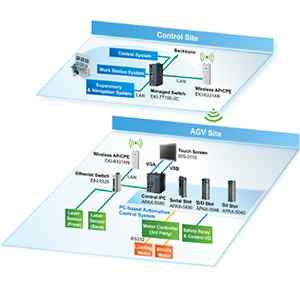Fluid Power Valves and Hose Fittings: Unveiling the Latest Insights

Introduction to Fluid Power Valves and Hose Fittings
Fluid power valves and hose fittings play a critical role in various industries, including manufacturing, construction, and transportation. These components are essential for controlling the flow of fluids such as hydraulic oil and pneumatic air, ensuring the efficient operation of machinery and equipment. In recent years, advancements in technology, materials, and design have led to significant developments in fluid power valves and hose fittings, offering improved performance, durability, and versatility. This article delves into the latest insights in this dynamic field, exploring key trends, innovations, challenges, and future prospects.
Trends in Smart Technologies
One of the prominent trends in fluid power valves and hose fittings is the integration of smart technologies. Manufacturers are increasingly incorporating sensors, actuators, and electronic controls into these components, enabling real-time monitoring, remote operation, and predictive maintenance. Smart valves and fittings can automatically adjust flow rates, detect anomalies, and communicate data to central systems, enhancing efficiency, reliability, and safety in fluid power systems. This trend aligns with the broader industry shift towards automation, connectivity, and Industry 4.0 principles.
Focus on Sustainability
Another significant development is the focus on sustainability and environmental compatibility. With growing concerns about carbon footprints and resource conservation, there is a push towards eco-friendly materials, energy-efficient designs, and recyclable components in fluid power valves and hose fittings. Innovations such as bio-based polymers, low-friction coatings, and optimized fluid dynamics contribute to reduced emissions, minimal waste generation, and enhanced lifecycle performance. Sustainable practices are becoming integral to product development, procurement decisions, and regulatory compliance across the fluid power sector.
Advancements in Materials Science
Advancements in materials science have also revolutionized fluid power valves and hose fittings. Traditional materials like steel, brass, and aluminum are being augmented or replaced by high-performance alloys, composites, and ceramics. These new materials offer superior strength-to-weight ratios, corrosion resistance, and temperature tolerance, enabling valves and fittings to withstand harsh operating conditions and prolong service life. Nanotechnology-based coatings and surface treatments further enhance durability, reduce friction, and prevent fluid contamination, ensuring optimal performance and reliability in diverse applications.
Compact and Modular Solutions
The demand for compact, lightweight, and modular solutions is driving innovation in fluid power valves and hose fittings. Space-constrained environments, mobile equipment, and agile manufacturing processes require components that are efficient, adaptable, and easy to install. Miniaturized valves, quick-connect fittings, and integrated manifolds save space, reduce weight, and simplify assembly, enabling faster deployment, flexible configurations, and cost-effective maintenance. These developments cater to evolving industry needs for efficiency, versatility, and scalability in fluid power systems.
Customization and Flexibility
In terms of design and functionality, customization and flexibility are key focus areas for fluid power valves and hose fittings. Manufacturers are offering configurable options, modular designs, and compatibility with various fluid types, pressures, and temperatures. This flexibility allows engineers and operators to tailor solutions to specific applications, optimize performance, and mitigate risks such as leaks, pressure drops, and fluid contamination. Standardization efforts, interoperability protocols, and digital tools facilitate seamless integration and interoperability across different equipment and systems.
Digitalization of Fluid Power Systems
The digitalization of fluid power systems is a transformative trend shaping the future of valves and hose fittings. The integration of data analytics, machine learning, and predictive algorithms enables condition monitoring, predictive maintenance, and performance optimization. Smart valves can anticipate failures, schedule maintenance proactively, and optimize energy consumption, resulting in reduced downtime, lower operating costs, and enhanced productivity. Digital twins, simulation tools, and virtual testing further accelerate product development cycles and facilitate continuous improvement in fluid power components.
Challenges and Opportunities
Despite these advancements, the fluid power industry faces several challenges and opportunities. One of the ongoing challenges is the complexity of system integration, especially in hybrid and networked environments. Interoperability issues, compatibility concerns, and cybersecurity risks require collaborative efforts among stakeholders to develop standards, protocols, and best practices. Training and education initiatives are crucial to equip engineers, technicians, and operators with the skills needed to design, install, and maintain modern fluid power systems effectively.
Market dynamics, regulatory requirements, and geopolitical factors also influence the fluid power landscape. Global market trends such as urbanization, infrastructure development, and renewable energy adoption drive demand for fluid power solutions in construction, renewable energy, and transportation sectors. Regulatory frameworks related to emissions, safety standards, and energy efficiency shape product design, testing, and certification processes. Geopolitical shifts, trade policies, and supply chain disruptions impact raw material sourcing, production costs, and market competitiveness for fluid power components.
Future Trends and Prospects
Looking ahead, the future of fluid power valves and hose fittings is intertwined with broader industry trends such as electrification, digitalization, and sustainability. Electrified actuators, hybrid systems, and energy recovery technologies are gaining traction to improve efficiency and reduce environmental impact. Digital twins, IoT connectivity, and predictive analytics will continue to drive innovation and value creation in fluid power systems. Sustainable practices, circular economy principles, and lifecycle assessments will guide product development and market strategies for a more resilient and responsible fluid power industry.
Conclusion:
In conclusion, fluid power valves and hose fittings are undergoing rapid evolution driven by technological advancements, market demands, and sustainability imperatives. The integration of smart technologies, sustainable materials, compact designs, customizable solutions, digitalization, and industry collaboration are defining the latest insights in this dynamic field. As industries strive for efficiency, performance, and environmental stewardship, fluid power components play a crucial role in powering the machinery, equipment, and infrastructure of today and tomorrow.







